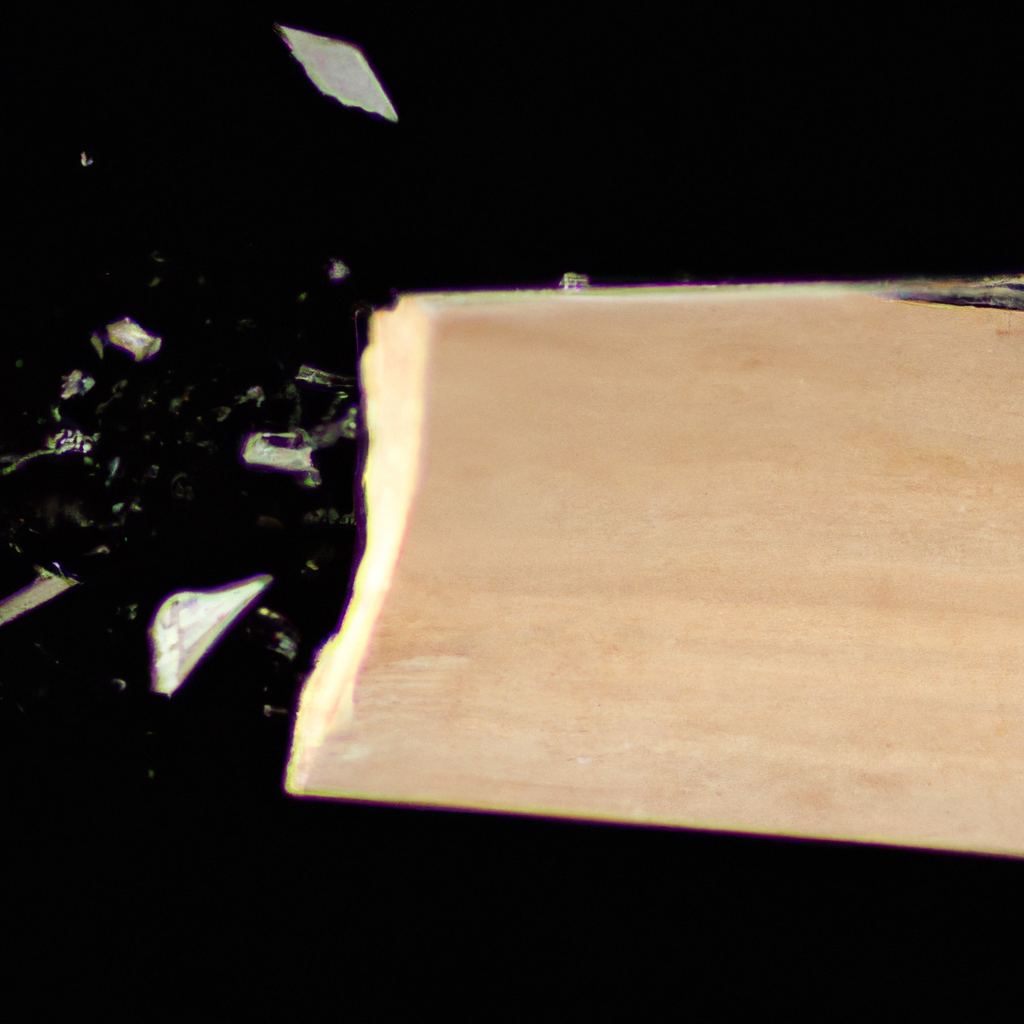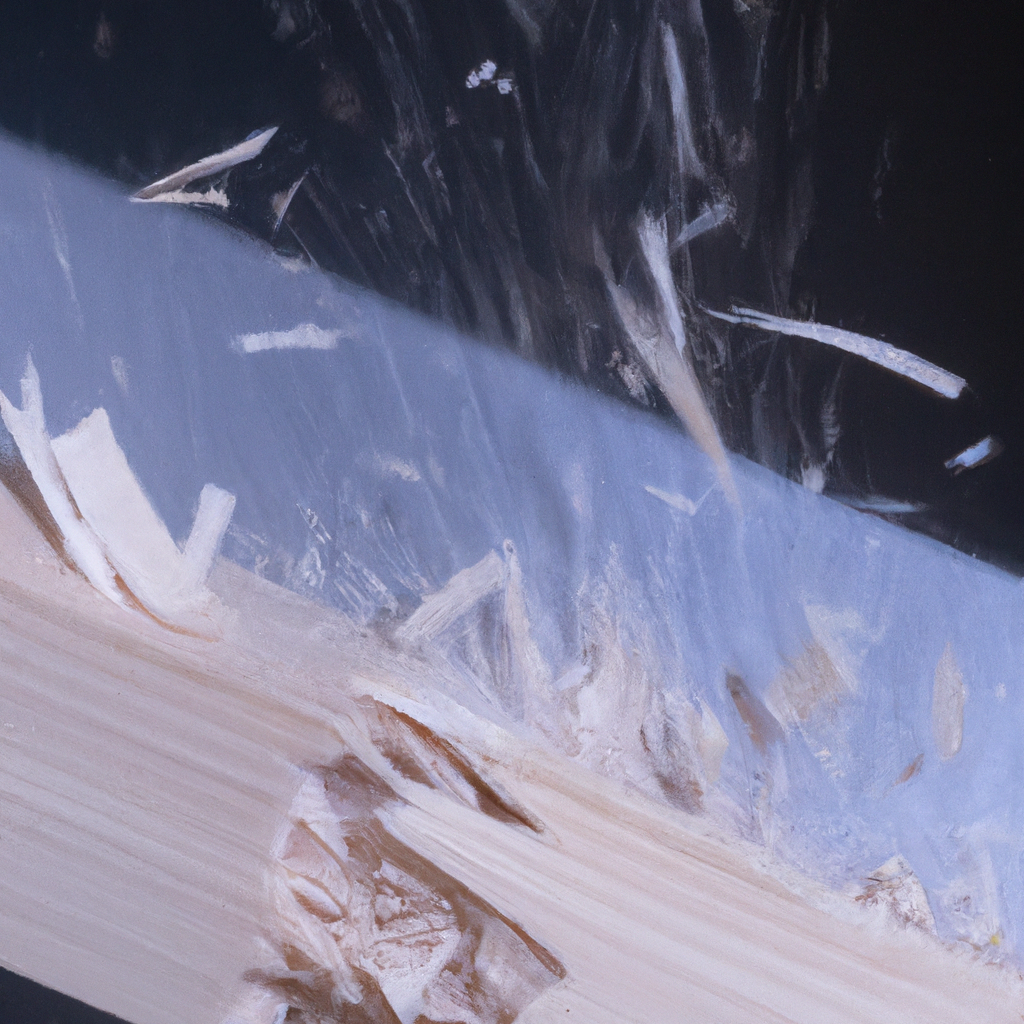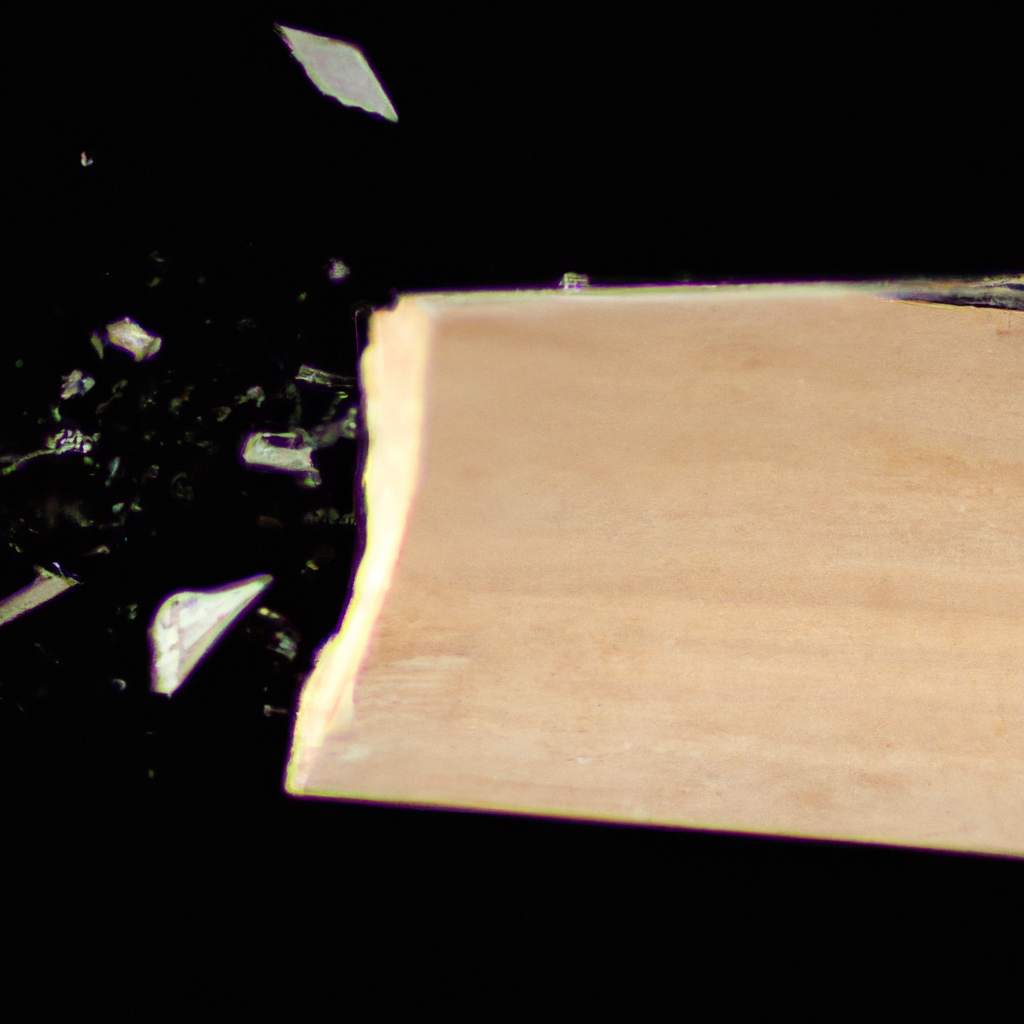Have you ever wondered why kickback occurs when using a table saw? Well, in this article, we will explore the various factors that can lead to kickback on a table saw. From improper blade alignment to incorrect handling techniques, we will delve into the common causes of kickback and provide helpful tips on how to prevent it. By understanding the reasons behind kickback, you can ensure a safer and more efficient woodworking experience with your table saw. So let’s get started and discover what causes kickback on a table saw!

Overview of Kickback on a Table Saw
Kickback on a table saw is a potentially dangerous occurrence that can cause serious injuries if not properly understood and prevented. Kickback refers to the sudden and forceful movement of the workpiece being cut, propelled back towards the user by the spinning blade. This unexpected movement can result in the workpiece being thrown with significant force, often in the direction of the user. It is crucial to have a comprehensive understanding of the causes of kickback in order to minimize the risks and ensure a safe working environment.
Definition of Kickback
Kickback is a term commonly used in the woodworking industry to describe the sudden and violent reaction of a workpiece when it is propelled towards the operator due to various factors. It occurs when the workpiece binds against the blade or when the blade grabs onto the material, resulting in a forceful backward movement. Kickback can happen in an instant and without warning, making it a serious safety concern for individuals operating a table saw.
Importance of Understanding the Causes of Kickback
Understanding the causes of kickback is crucial for several reasons. Firstly, it allows you to minimize the risks associated with kickback and take appropriate preventive measures. By knowing the factors that contribute to kickback, you can make well-informed decisions regarding the setup, operation, and maintenance of your table saw. Secondly, understanding the causes of kickback helps you identify potential hazards and implement effective safety precautions. Lastly, by understanding the causes of kickback, you can educate others and promote a culture of safety in woodworking environments.
Inadequate Blade Guard and Splitter
Role of Blade Guard and Splitter
The blade guard and splitter are essential safety features on a table saw that play a crucial role in kickback prevention. The blade guard serves as a protective barrier between the user and the spinning blade, preventing accidental contact and guiding the workpiece along a safe cutting path. The splitter, on the other hand, helps to prevent the workpiece from binding against the rear of the blade, reducing the risk of kickback. These safety components work in conjunction to enhance both the safety and efficiency of the table saw.
Implications of Missing or Malfunctioning Blade Guard and Splitter
When the blade guard or splitter is missing or malfunctioning, the risk of kickback significantly increases. Without a blade guard, the operator is at a higher risk of accidental contact with the spinning blade, which can cause serious injuries. Similarly, the absence of a splitter allows the workpiece to bind against the blade, increasing the likelihood of kickback. It is crucial to ensure that the blade guard and splitter are properly installed, functional, and regularly inspected to maintain their effectiveness in preventing kickback.

Improper Feeding Technique
Introduction to Feeding Technique
Feeding technique refers to the way in which the workpiece is guided and advanced through the blade during a cut. Proper feeding technique is essential for efficient and safe operation of the table saw. It involves maintaining a firm and controlled grip on the workpiece, using appropriate feeding aids, and ensuring a steady feed rate. Proper feeding technique not only minimizes the risk of kickback but also improves the accuracy and quality of the cuts.
Effects of Improper Feeding Technique
Improper feeding technique can greatly increase the likelihood of kickback. If the workpiece is not guided smoothly and steadily through the blade, there is a higher chance of it binding against the blade or getting caught, leading to kickback. Additionally, excessive force or pushing the workpiece too quickly can overload the blade and cause it to grab the material, resulting in kickback. It is essential to use proper feeding techniques, such as maintaining a controlled feed rate and using push sticks or feather boards when necessary, to prevent kickback and ensure safe operation of the table saw.
Incorrect Blade or Saw Setup
Significance of Proper Blade and Saw Setup
Proper blade and saw setup is vital for both the performance and safety of a table saw. The blade should be correctly aligned, securely mounted, and appropriate for the material being cut. Similarly, the saw’s settings, such as the blade height, bevel angle, and fence alignment, should be accurately adjusted to ensure precise and safe cuts. When the blade or saw setup is incorrect, it greatly increases the risk of kickback and compromises the overall effectiveness of the table saw.
Consequences of Incorrect Blade or Saw Setup
Incorrect blade or saw setup can lead to kickback and other safety hazards. If the blade is not aligned properly, it may cause the workpiece to bind against the blade, resulting in kickback. A misaligned fence can also cause the workpiece to be pushed out of alignment with the blade, increasing the risk of kickback and inaccurate cuts. Additionally, a blade that is not suitable for the material being cut increases the chances of kickback and can result in poor-quality cuts. It is essential to carefully set up and adjust the blade and saw according to the manufacturer’s guidelines to ensure safe and effective operation of the table saw.
Dull or Improperly Maintained Blade
Reasons for Blade Dullness or Poor Maintenance
Blade dullness or improper maintenance is a common issue that can contribute to kickback. Blades can become dull over time due to repeated use, contact with abrasive materials, or inadequate maintenance. Improper maintenance, such as failing to clean the blade or neglecting to sharpen it regularly, can also result in reduced cutting performance and an increased risk of kickback. It is crucial to regularly inspect and maintain the blade to ensure it remains sharp and in optimal condition.
Impact of Dull or Improperly Maintained Blade
Using a dull or poorly maintained blade significantly increases the risk of kickback. A dull blade can struggle to cut through the material smoothly, leading to an increased chance of the workpiece binding against the blade and causing kickback. Additionally, a dull blade requires more force to cut, increasing the likelihood of exhausting the motor and causing the blade to grab the material aggressively, resulting in kickback. Regularly inspecting, cleaning, and sharpening the blade are essential practices to prevent kickback and ensure safe operation of the table saw.
Insufficient or Unstable Rip Fence
Importance of Proper Rip Fence Usage
The rip fence is an essential component of a table saw that helps guide the workpiece parallel to the blade during a rip cut. Proper usage of the rip fence is crucial for safe and accurate cuts. It is important to ensure that the rip fence is properly aligned, securely locked in place, and parallel to the blade. When the rip fence is used incorrectly or is not stable, it can lead to a variety of hazards, including kickback.
Problems Resulting from Insufficient or Unstable Rip Fence
When the rip fence is insufficient or unstable, it greatly increases the risk of kickback. An insufficiently aligned or loose rip fence can cause the workpiece to be pushed out of alignment with the blade, resulting in kickback. If the rip fence is not parallel to the blade, it can cause the material to bind, increasing the likelihood of kickback. It is crucial to ensure proper installation, alignment, and stability of the rip fence to prevent kickback and maintain a safe working environment.
Material Binding or Pinching
Causes of Material Binding or Pinching
Material binding or pinching occurs when the workpiece becomes trapped between the blade and another object, such as the fence or miter gauge. It can happen due to improper feeding technique, incorrect setup, or other factors. Material binding or pinching creates a significant risk of kickback, as it prevents the workpiece from moving smoothly through the blade and can lead to sudden and forceful movement.
Effect of Material Binding or Pinching on Kickback
When material binding or pinching occurs, the risk of kickback increases significantly. A bound or pinched workpiece may be forcefully propelled back towards the operator when the blade grabs the material, causing kickback. This sudden and unexpected movement can be dangerous and cause serious injuries. It is crucial to use proper feeding techniques, ensure accurate setup, and be vigilant for potential binding or pinching situations to prevent kickback and maintain a safe working environment.
Lack of Proper Training and Experience
Necessity of Training and Experience
Proper training and experience are essential for safely operating a table saw and minimizing the risk of kickback. The knowledge and skills gained through training help individuals understand the potential hazards associated with table saw use, identify the causes of kickback, and implement appropriate preventive measures. Experience allows operators to develop the expertise and intuition necessary to anticipate and react to potential kickback situations, fostering a safer working environment.
Consequences of Insufficient Training or Experience
Insufficient training or lack of experience significantly increases the likelihood of kickback and other safety hazards. Without proper training, individuals may not be aware of the causes of kickback, leading to unsafe practices and an increased risk of accidents. Inexperienced operators may also struggle to recognize and respond appropriately to potential kickback situations, further compromising their safety. It is essential to provide comprehensive training and ensure individuals gain sufficient experience under supervision before operating a table saw independently.
Inadequate Safety Precautions
Examples of Inadequate Safety Precautions
Inadequate safety precautions refer to the failure to implement necessary measures to prevent kickback and ensure a safe working environment. Examples of inadequate safety precautions include failing to wear appropriate personal protective equipment (PPE), neglecting to use feeding aids, bypassing safety features, and disregarding established safety guidelines. These inadequate precautions significantly increase the risks associated with kickback and compromise the overall safety of the table saw operation.
Dangers of Ignoring Safety Guidelines
Ignoring safety guidelines and failing to implement necessary safety precautions can have severe consequences. It greatly increases the likelihood of kickback, which can lead to traumatic injuries, including lacerations, fractures, and even amputations. Neglecting to wear appropriate PPE, such as safety glasses or hearing protection, can result in serious permanent damage. It is crucial to prioritize safety, adhere to established safety guidelines, and consistently implement the necessary precautions to minimize the risks associated with kickback.
Preventing Kickback
Best Practices for Kickback Prevention
Preventing kickback requires a combination of proper equipment setup, safe operating techniques, and effective safety measures. Some best practices for kickback prevention include ensuring the blade guard and splitter are properly installed and functional, using appropriate feeding techniques and aids, maintaining the blade and saw in optimal condition, ensuring the rip fence is aligned and secure, and adhering to established safety guidelines.
Safety Equipment and Measures to Implement
In addition to best practices, implementing specific safety equipment and measures can further enhance kickback prevention. These may include using push sticks or feather boards to maintain proper control and feed rate of the workpiece, installing anti-kickback pawls or devices that prevent the workpiece from being thrown back, and using a riving knife to minimize the risk of material binding against the rear of the blade. Additionally, wearing appropriate PPE, such as safety glasses, hearing protection, and a dust mask, is crucial for ensuring personal safety during table saw operations.
In conclusion, kickback on a table saw is a serious safety concern that can result in severe injuries if not properly understood and prevented. By comprehensively understanding the causes of kickback, such as inadequate blade guard and splitter, improper feeding technique, incorrect blade or saw setup, dull or improperly maintained blade, insufficient or unstable rip fence, material binding or pinching, lack of proper training and experience, and inadequate safety precautions, individuals can effectively minimize the risks associated with kickback. Implementing best practices for kickback prevention and utilizing appropriate safety equipment and measures further enhance the overall safety of table saw operations. Prioritizing safety and consistently adhering to established safety guidelines are crucial in creating a safe and secure working environment for table saw users.

